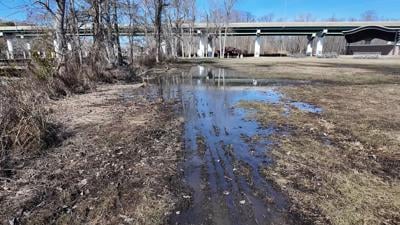POCOMOKE CITY, Md. -- Pocomoke City is collaborating with the Department of Natural Resources (DNR) to address the persistent issue of flooding in Cypress Park. Located next to the Pocomoke River, the park often transforms into a swamp-like landscape after it rains or snows.
One of the issues, according to City Manager John Barkley, is a lack of protection from the river. Several areas have banks just inches above the water line.
Barkley emphasizes the need for a natural solution.
"It's funny because it comes in fast and it goes out slow, and so these kinds of areas here[pointing to river bank] are where we need to do additional plantings and erosion control measures," said Barkley.
While a definitive solution awaits the creation a plan by the DNR, proactive steps are being taken. In March, a contractor will commence work in Cypress Park to identify specific areas of concern and potential remedies.
City Manager John Barkley said that there will be no financial burden on the city, as the chosen contractor's expenses will be invoiced to the DNR. This alleviates any cost-related concerns for the $50,000 study.
Neighbors are optimistic that the study will translate into effective measures to prevent standing water in the park.
"It really wouldn't take a lot I think to keep it pushed off here," said Bob Rosati of Pocomoke. "I mean this is a park and you see it kind of on settled land here but anything they can do to keep it into the river would be great."
Rosati was at Cypress Park on Wednesday playing pickleball, and said there have been times where floods caused by storms have left portions of the court with standing water.
"We were literally, this much before we were going to be flooded out from playing here," said Rosati with his fingers nearly touching to demonstrate the severity of the flooding.
Pocomoke City is eagerly anticipating the start of the study, with the ultimate goal of keeping water from the Pocomoke River within its natural boundaries.
DNR said the study should run through September, at which point the state agency hopes to come up with a plan for improvements and figure out how it will be paid for.


